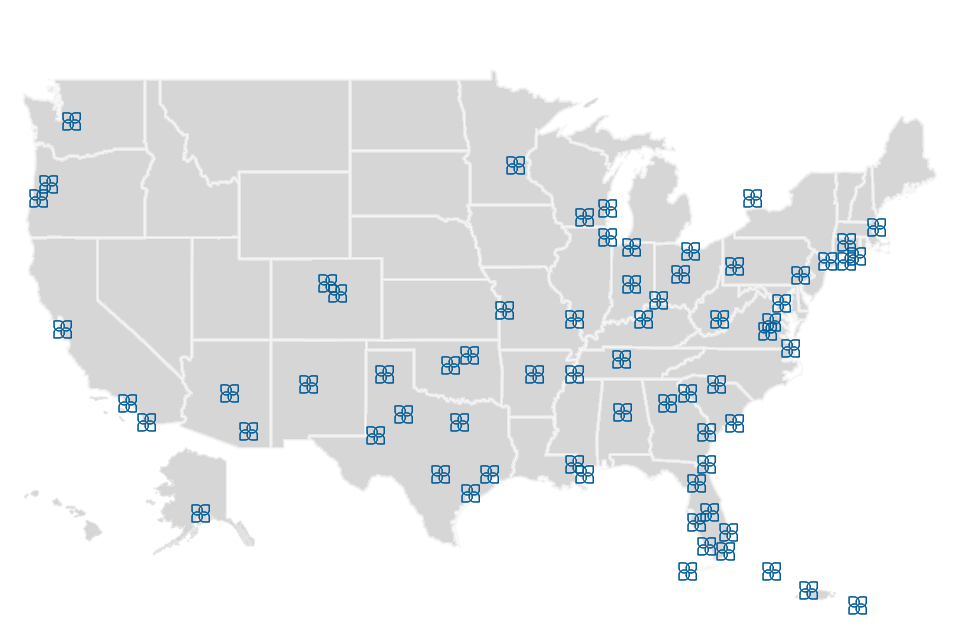New Generation of Investment Markets on the Rise
As gateways get pricier, a new wave of markets has come to the fore within the transaction market.
In recent years, our firm, The Plasencia Group, has found that quality hospitality investment opportunities in major markets have been more difficult to come by.
Manhattan, Southern California, Northern California, Chicago, Boston and South Florida have all seen a decrease in hotel transactions since peaking around 2011 and 2012. During that time period, on the heels of a recession, there was plenty of value to be found in investments in those marquis markets. Shrewd investors (including real estate investment trusts), other institutional investors and some foreign groups purchased hotels in these areas during this period with plans for long ownership horizons. These groups have, for the most part, held these assets and will continue to do so for the foreseeable future as real estate values continue to appreciate.
This virtual oligopoly in which relatively few companies (mostly REITs) own many of the upscale, upper upscale, and luxury hotels (and especially branded hotels) in gateway markets has created compression in the broader transaction market. We have seen that markets previously viewed as secondary or tertiary are increasingly attractive to investors who are being priced out of the traditional primary markets. This even includes investors who currently own in gateway markets such as Manhattan and San Francisco but find it increasingly difficult to compete in pricing in those markets given the low supply and high demand of quality opportunities.
As a result, a new wave of markets have come to the fore within the transaction market. Markets such as Indianapolis, Kansas City, Charlotte, Atlanta, Jacksonville, Orlando, Tampa, Dallas, Phoenix and Salt Lake City have seen noticeable spikes in number of transactions in recent years. Tertiary markets (such as Gainesville, Florida or Amarillo, Texas) across the country have also seen astounding growth in transactions. These secondary or tertiary markets are generally characterized by high population growth, lowering unemployment rates and cheaper real estate values, all of which are attractive to incoming investors.
Based on our discussions with investors, we’ve determined the following markets, formerly viewed as ancillary, to be especially attractive in today’s market:
- Charlotte: While new supply has been somewhat of a concern in this market, Charlotte is certainly of interest to investors. This interest is fueled by a heavy concentration of banking and financial services in the local economy, a massive airport, professional sports teams and a major convention center. Carey Watermark and Summit Hotel Properties have recently made significant purchases in Charlotte’s Uptown, signifying its acceptability among savvy investors.
- Salt Lake City: As one of just a few major markets in the American West, Salt Lake City has become an attractive investment alternative to Denver, which is increasingly pricey. Salt Lake City benefits from an up-and-coming economy with a focus on technology and a location proximate to several leisure destinations, including national parks and ski towns.
- Tampa: Tampa has ascended to national prominence as a major real estate investment destination, with institutional capital flooding the local multifamily, office, retail and lodging sectors. Much of this has to do with the multibillion-dollar expansion of Tampa International Airport, as well as Tampa’s signature Downtown waterfront project, dubbed “Water Street Tampa,” being developed by Strategic Property Partners, a partnership of Bill Gates’ Cascade Investments and Jeff Vinik, the owner of the Tampa Bay Lightning NHL team.
- College towns: The combination of distinctive cultures, consistent demand, young and innovative workforces, and demographic growth that is typical in college towns makes them ideal target markets for many investor groups.
Beyond a shift in markets across the broader United States, transaction compression is evident on a more micro level, as suburban areas and nearby markets and/or submarkets are becoming popular alternatives to certain gateway CBDs. The most obvious example is the New York Metroplex. While Manhattan has seen a drop in transactions recently, surrounding submarkets have seen increases in transactions. This is evident in Florida as well, where there has been a shift from Miami-Dade, Broward and Palm Beach counties to other Florida markets such as Tampa, Orlando, Jacksonville and Southwest Florida. These nearby markets and submarkets often offer many of the same benefits as the traditional top markets based on their geography, but at much lower prices.
Finally, we’ve also found that, along with being open to a new slate of markets, investors are interested in a wider range of property types. Resorts and hotels in destination markets are increasingly popular among prospective investors, as are limited-service hotels. Groups that formerly might have focused on full-service hotels in top 10 markets might now consider a limited-service hotel in a destination market such as Boise, Idaho, or a resort on the Carolina coast.
Investors will continue to flock to opportunities where they feel they can be most competitive and where their time spent underwriting won’t be wasted. As they get more creative and adventurous in their prospecting, the new generation of attractive investment options will continue to expand.
This article appeared in Hotel News Now on March 6, 2019.


